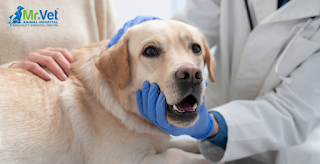Key Early Warning Signs of Cancer in Dogs Every Pet Owner Should Know

Scabies in Dogs Cancer in dogs is a significant concern for pet owners, especially as it is one of the leading causes of death in older dogs. However, with early detection, many cancers can be treated or managed, offering your dog a better chance at a longer and healthier life. Recognizing the early warning signs of cancer is crucial for timely intervention. This guide will help you understand the key symptoms of cancer in dogs and the necessary steps to take if you observe any of these signs. Early Warning Signs of Cancer in Dogs 1. Lumps and Bumps One of the most noticeable early signs of cancer in dogs is the development of lumps or bumps on their body. While not all lumps are cancerous, any new growth or an existing lump that changes in size, shape, or texture should be examined by a veterinarian. Cancerous tumors typically grow quickly and may have an irregular shape or feel. Regularly checking your dog for lumps during grooming can help you catch the...


